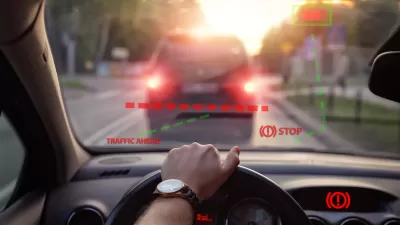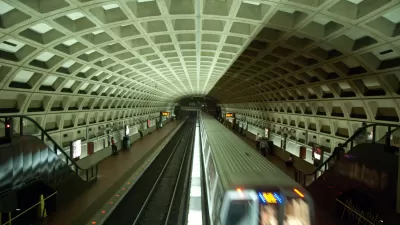Two commuter trains traveling toward each other on a single track crashed in the Puglia region of southern Italy on Tuesday morning. Human error is suspected. The trains and track lacked automatic train control and automatic braking.
Total fatalities won't be determined until a crane can pull the cars apart. Other media outlets report that 23, not 25, had died. Forty-three people were injured. Each train had four passenger cars, but only one rail car was left standing. The trains were estimated to have been traveling at 56 m.p.h. at the time of impact.
The BBC video shows an aerial sight of the crash. It's difficult to even detect some of the rail cars among the wreckage.
"Prime Minister Matteo Renzi sent the infrastructure and transportation minister, Graziano Delrio, and the head of the civil protection agency, Fabrizio Curcio, who oversees emergency response in Italy, to the site of the crash," reports Gaia Pianigiani from Rome for The New York Times.
The circumstances that led to the collision were unclear. A team of inspectors from the transportation ministry will work with local prosecutors to determine the cause, officials said.
Lack of automatic braking or automatic train control
Stefania Gnesi, an information technology staff researcher at the National Research Council, said that the trains were probably operating on instructions from dispatchers. “It’s probable that there was some human error in this chain, in a section of train track that has no automatic control or automatic brake system,” she said.
Automatic systems are used on most of Italy’s railway lines, but have not yet been installed in some areas, especially in southern Italy, which is less developed and less prosperous than the north.
The crash is the most deadly since June 2009 when a 14-car freight train carrying liquefied petroleum gas derailed and exploded near Tuscany, ultimately killing 32 people.
Deadly Amtrak derailment in May 2015
Similar issues regarding automatic braking were raised in a May 2015 Amtrak derailment in Philadelphia that left eight dead.. The Federal Railroad Administration ordered Amtrak to install automatic train control on northbound trains in the Northeast Corridor that is already working for southbound trains, notes a later post.
According to CNN, "(t)he system notifies an engineer if a train is speeding and applies the brakes automatically if the engineer does not respond. Amtrak is in the process of installing a sharper technology known as Positive Train Control (PTC) on all of its tracks."
The National Transportation Safety Board determined a year after the derailment that human error was the cause of the derailment, specifically resulting from the "loss of situational awareness by the train’s engineer after his attention was diverted to an emergency involving another train."
Head-on crash in Germany in February
A similar head-on crash on a single track occurred on February 9 in Germany, leaving 10 dead. Human error was to blame. After an investigation, it was determined that the dispatcher was "playing a game on his cellphone until just before the accident," reported Alison Smale for The New York Times in April. Unlike the Italian crash, the trains and track were fitted with automatic braking.
That crash raised "new questions about the safety and reliability of a rail network in Europe that has been the envy of much of the world, reported Melissa Eddy for The New York Times in February, adding that "crashes across Europe in recent years have highlighted weaknesses in the rail network." Eddy later wrote that "the German news media have reported that the [automatic braking] system had been turned off at the time of the crash."
FULL STORY: Train Crash in Italy Leaves at Least 25 Dead and Dozens Injured

Maui's Vacation Rental Debate Turns Ugly
Verbal attacks, misinformation campaigns and fistfights plague a high-stakes debate to convert thousands of vacation rentals into long-term housing.

Planetizen Federal Action Tracker
A weekly monitor of how Trump’s orders and actions are impacting planners and planning in America.

In Urban Planning, AI Prompting Could be the New Design Thinking
Creativity has long been key to great urban design. What if we see AI as our new creative partner?

California Creates Housing-Focused Agency
Previously, the state’s housing and homelessness programs fell under a grabbag department that also regulates the alcohol industry, car mechanics, and horse racing.

Chicago’s Ghost Rails
Just beneath the surface of the modern city lie the remnants of its expansive early 20th-century streetcar system.

Baker Creek Pavilion: Blending Nature and Architecture in Knoxville
Knoxville’s urban wilderness planning initiative unveils the "Baker Creek Pavilion" to increase the city's access to green spaces.
Urban Design for Planners 1: Software Tools
This six-course series explores essential urban design concepts using open source software and equips planners with the tools they need to participate fully in the urban design process.
Planning for Universal Design
Learn the tools for implementing Universal Design in planning regulations.
planning NEXT
Appalachian Highlands Housing Partners
Mpact (founded as Rail~Volution)
City of Camden Redevelopment Agency
City of Astoria
City of Portland
City of Laramie





























